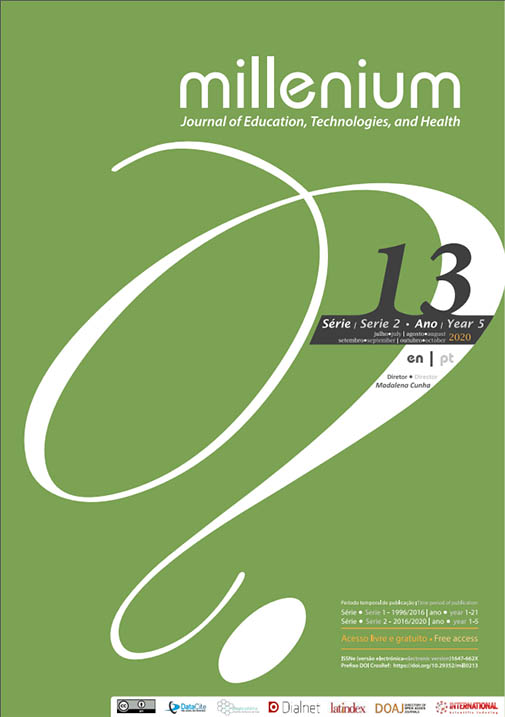Effects of “sargaço” extraction residues on seed germination
DOI:
https://doi.org/10.29352/mill0213.03.00279Keywords:
seaweed, residue extractive, seed germination, Phaseolus vulgaris, Brassica oleracea var. acephalaAbstract
Introduction: The “Sargaço” is a mixture of seaweeds that grow on the rocks of the Minho coast and the seaweeds during their development synthesize different metabolites. During the seaweed extraction process, some of these metabolites are not taken, thus not promoting the circular economy.
Objectives: This work aimed to evaluate the seed germination potential of the residues discarded from aqueous extraction process of “Sargaço”. Providing a potential use to the undervalued sub product of the extraction it was used bean cv.
Methods: Torino (Phaseolus vulgaris) and kale (Brassica oleracea var. acephala) seeds in assays with the following treatments of residues: control (C), “Sargaço” harvested in 2017 with (W) and without the washing process (NW), and the same for the “Sargaço” harvested in 2018 (W and NW). During the experiment, the emergence rate, the germination rate and the total weight difference, were recorded. At the end, the root and shoot length were measured as well as fresh plantlet weight.
Results: In bean, the treatment with washed “Sargaço” 2018 was the only one showing seed germination (C = 60%; W2018 = 32%) beyond the control and with better results in the radicular weight than control (C= 0,0350 g; W2018= 0,299 g). In kale, only the washed “sargaço” 2017 had a germination rate like the control (C=80%, W2017=64%) and the overall weight was better (C= 0,0026 g, W2017= 0,0102 g).
Conclusions: The washed residues produced the best results comparatively which is probably due to the higher salinity of the unwashed residues.
Downloads
References
Bayuelo-Jiménez, J. S., Craig, R., & Lynch, J. P. (2002). Salinity tolerance of Phaseolus species during germination and early seedling growth. Crop Science, 42(5), 1584-1594.
Battacharyya, D., Babgohari, M. Z., Rathor, P., & Prithiviraj, B. (2015). Seaweed extracts as biostimulants in horticulture. Scientia Horticulturae, 196, 39–48. https://doi.org/10.1016/J.SCIENTA.2015.09.012
Chatzissavvidis, C., & Therios, I. (2014). Role of algae in agriculture. Seaweeds: Agricultural Uses, Biological and Antioxidant Agents.Retrieved from http://www.scopus.com/inward/record.url?eid=2-s2.0-4956765421&partnerID=tZOtx3y1
Economou, G., Lyra, D., Sotirakoglou, K., Fasseas, K., & Taradilis, P. (2007). Stimulating Orobanche ramosa seed germination with an Ascophyllum nodosum extract. Phytoparasitica, 35(4), 367–375. https://doi.org/10.1007/BF02980699
Ghisellini, P., Cialani, C., & Ulgiati, S. (2016). A review on circular economy: the expected transition to a balanced interplay of environmental and economic systems. Journal of Cleaner Production, 114, 11–32. https://doi.org/10.1016/J.JCLEPRO.2015.09.007
Khan, W., Rayirath, U. P., Subramanian, S., Jithesh, M. N., Rayorath, P., Hodges, D. M., … Prithiviraj, B. (2009). Seaweed Extracts as Biostimulants of Plant Growth and Development. Journal of Plant Growth Regulation, 28(4), 386–399. https://doi.org/10.1007/s00344-009-9103-x
Lopes, J. (2018). Estudo da influência do uso de extratos de macroalgas na produção de alface (Lactuca sativa). Relatório de estágio profissionalizante, Escola Superior Agrária de Coimbra, Instituto Politécnico de Coimbra, Coimbra, Portugal. In Portuguese Monagail, M., Cornish, L., Morrison, L., Araújo, R., & Critchley, A. T. (2017). Sustainable harvesting of wild seaweed resources. European Journal of Phycology, 52(4), 371–390. Https://doi.org/10.1080/09670262.2017.1365273
Pereira, L., & Correia, F. (2015). Macroalgas Marinhas da Costa Portuguesa-Biodiversidade, Ecologia e Utilizações (1st Edition). Paris: Nota de Rodapé Edições. ISBN 978-989-20-5754-5
Pereira, L., & Cotas, J. (2019). Historical Use of Seaweed as an Agricultural Fertilizer in the European Atlantic Area. In L. Pereira, K. Bahcevandziev, & N. H. Joshi (Eds.), Seaweeds as Plant Fertilizer, Agricultural Biostimulants and Animal Fodder (1st Edition, pp. 1–22). Boca Raton, FL: CRC Press. https://doi.org/10.1201/9780429487156
Rayorath, P., Jithesh, M. N., Farid, A., Khan, W., Palanisamy, R., Hankins, S. D., … Prithiviraj, B. (2008). Rapid bioassays to evaluate the plant growth promoting activity of Ascophyllum nodosum (L.) Le Jol. using a model plant, Arabidopsis thaliana (L.) Heynh. Journal of Applied Phycology, 20(4), 423–429. Https://doi.org/10.1007/s10811-007-9280-6
Santelices, B. (2007). The discovery of kelp forests in deep-water habitats of tropical regions. Proceedings of the National Academy of Sciences, 104(49), 19163-19164. https://doi.org/10.1073/pnas.0708963104
Silva, L. D., Bahcevandziev, K., & Pereira, L. (2019). Production of bio-fertilizer from Ascophyllum nodosum and Sargassum muticum (Phaeophyceae). Journal of Oceanology and Limnology, 37(3), 918–927. Https://doi.org/10.1007/s00343-019-8109-x
Stahel, W. R. (2016). The circular economy. Nature News, 531(7595), 435-438. https://doi.org/10.1038/531435a
Downloads
Published
How to Cite
Issue
Section
License
Copyright (c) 2020 Millenium - Journal of Education, Technologies, and Health

This work is licensed under a Creative Commons Attribution 4.0 International License.
Authors who submit proposals for this journal agree to the following terms:
a) Articles are published under the Licença Creative Commons (CC BY 4.0), in full open-access, without any cost or fees of any kind to the author or the reader;
b) The authors retain copyright and grant the journal right of first publication, allowing the free sharing of work, provided it is correctly attributed the authorship and initial publication in this journal;
c) The authors are permitted to take on additional contracts separately for non-exclusive distribution of the version of the work published in this journal (eg, post it to an institutional repository or as a book), with an acknowledgment of its initial publication in this journal;
d) Authors are permitted and encouraged to publish and distribute their work online (eg, in institutional repositories or on their website) as it can lead to productive exchanges, as well as increase the impact and citation of published work
Documents required for submission
Article template (Editable format)





